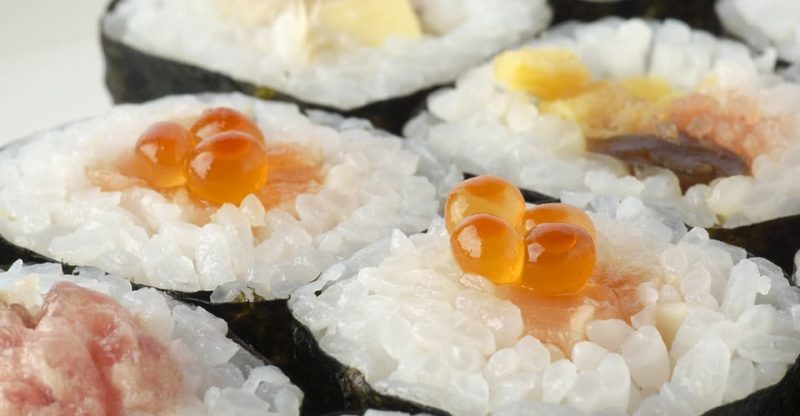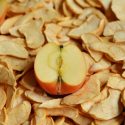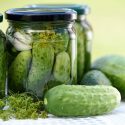What Is ε-Poly-L-Lysine In Food? Uses, Safety, Side Effects

Made of | Production | Uses | Safety | Side effects | FAQs
ε-poly-L-lysine or ε-polylysine is a new food biopreservative compared with natamycin and nisin. This ingredient is a natural antimicrobial peptide metabolized by Streptomyces and has a wide antibacterial spectrum against Gram-negative, Gram-positive bacteria, yeasts, and molds. Commonly used in the preservation of rice, soups, noodles and sliced fish (sushi).
What is it made of?
ε-poly-L-lysine is a homopolymer of lysine monomers polymerized by forming amide bonds between ε-amino groups and α-carboxyl groups. Its food grade is a mixture of molecules with 25 to 35 degrees of polymerization.
How is it Made?
There are several types of ε-poly-L-lysine sold in the market, one is a pure form or mixed with maltodextrin powder at a ratio of 50:50 or 25% w/v water solution, the common form is its hydrochloride salt. The following are the corresponding two manufacturing processes:
- ε-poly-L-lysine: produced by Streptomyces. Albulus from aerobic fermentation, glucose as the substrate, and follows ion-exchange resins and spray dried. (1)
- ε-poly-L-lysine hydrochloride: manufactured by Streptomyces diastatochromogenes fermentation and purified through ion exchange and spray dried. (2)
How does it Work?
The main preservation mechanism of ε-polylysine is described as the following steps:
- ε-polylysine is a highly polymerized polyvalent cation (positively charged) which interacts and binds with negatively charged microbial cell membranes of microorganisms and form holes in the membrane.
- it destroys the cell membrane structure of microorganisms and causes the leakage of intracellular substances.
- ε-polylysine enters the cell through the holes in the membrane, which affects the structure and function of the cell membrane, and interferes the normal physiological metabolism of microorganisms, destroys the transmission of materials and energy in the cell, induces the cell to autolysis and finally causes the death of the bacterial cell.
It has the antibacterial effects on following microorganisms list (incomplete):
- E.coli
- Staphylococcus aureus
- Bacillus subtilis
- Streptococcus thermophilus
- Lactobacillus bulgaricus
- Lactobacillus plantarum
- Saccharomyces cerevisiae
- Pichia
- Candida
- Rhizopus niger
- Mucor tall
Specification
Other names
- epsilon polylysine
- ε-PL
CAS Number
28211-04-3
Chemical Formula
[C6H12N2O] n٠H2O n=25-35
Molecular Weight
3218-4498
Structure

Properties
ε-polylysine is a natural biological metabolism product, with strong bactericidal ability, broad antibacterial spectrum, good water solubility, thermal stability, and will not affect food flavor.
Appearance
- Pure product is a light yellow powder, with a little bitter taste.
- Hydrochloride salt: white to cream-yellow powder.
Solubility
Soluble in water, slightly soluble in ethanol, insoluble in organic solvents such as ethyl acetate and ether.
PH
Effective over a wide range of PH values from 3 to 9 and suitable for most foods.
Stability
ε-Polylysine has good thermal stability which will not decompose and lose antibacterial activity even if treated 20 min in an aqueous solution of 120 ℃. Therefore, ε-polylysine can go through the general heat process in food processing with raw materials, thereby preventing secondary food pollution.
What are the uses of ε-Poly-L-Lysine?
The commercial application of this ingredient started earlier in Japan, and then in Korea and the United States. In 2014, China approved ε-PL and its hydrochloride as a new food preservative that can be used in the food and beverage.
Food
The following food may contain it (3) :
- Soft drinks
- Rice
- Processed cheese and cheese spreads
- Pickles
- Salad dressings
- Yogurt
- Soups
- Fish and shellfish-based foods
- Tomato-based sauces
- Fruit-flavored drinks
Synergy with other Additives or Preservatives
ε-poly-L-lysine can not only be used alone but also can be mixed with other food additives to improve its antimicrobial effects. It has synergistic effects with hydrochloric acid, acetic acid, malic acid, citric acid, glycine, and senior fatty glycerides.
It has significant synergistic effects against Listeria monocytogenes and Bacillus cereus when used with another natural preservative Nisin. ε-PL has antibacterial effects on Escherichia coli and yeasts which Nisin cannot inhibit.
Synergy with glycine to exhibit an antibacterial effect on Bacillus subtilis and Aspergillus flavus. The combined use of ε-PL and acetic acid can effectively inhibit the growth of Bacillus subtilis.
Coating in Cell Culture
Poly-L-lysine-coated coverslips are commonly used to promote cell adhesion to a solid surface (glassware and plasticware) in cell culture for easier manipulation of samples in medical experiments. Poly-L-lysine hydrobromide solution (0.01%) is a widely used adhesive for tissue slides as it is polycationic which interacts with the anions on the tissue and produces strong adhesion.
It is the alpha-Poly-L-lysine (not food grade) used in this field instead of ε-Poly-L-lysine.
Is ε-Poly-L-Lysine safe to Eat?
Yes, it is considered safer than chemical preservatives as it is natural and it is partly hydrolyzed to L-lysine (an essential amino acid) after ingested by the human body. It has the function of both preservation and nutrition fortification.
Its safety has been approved by the Japan Ministry of Health, Labour and Welfare, U.S. Food and Drug Administration in 2003 and afterward, National Health Commission of the People’s Republic of China (NHC) approved it in 2014. It is also authorized in some other countries.
Chemical synthetic preservatives (e.g. sodium benzoate, potassium sorbate) are widely used in food to extend shelf life in today’s food industry. However, the health concerns surrounding them are always coming up which makes consumers afraid of the safety of their food and seeks safe preservatives, and thus biological preservatives stand out.
FDA
In 2004, FDA had no questions regarding the conclusion of Japan manufacturer Chisso Corporation that polylysine was generally recognized as safe (GRAS) for use as an antimicrobial agent in cooked rice or sushi rice at the maximum use levels 50 mg/kg. (4)
In 2011, FDA also had no questions regarding the conclusion of the supplier Purac Biochem b.v. that polylysine was GRAS under the intended uses as an antimicrobial agent in several food categories except for meat and poultry products at levels up to 0.025%. (5)
China NHC
ε-Polylysine is approved to be used in baked goods, cooked meat products, fruit and vegetable juices and their beverages. ε-polylysine hydrochloride can be used in the following food list:
- Fruits, vegetables (including roots), beans, edible fungi, algae, nuts and seeds
- Rice and products
- Wheat flour and its products
- Cereal products
- Meat and meat products
- Condiment
- drink
- Spiced corned egg
What are the possible side effects?
According to the information from the supplier Purac and FDA, that ε-poly-L-lysine is safe under the intended conditions of use after the studies on acute, subchronic, chronic oral toxicity, carcinogenicity, reproduction, teratogenicity and mutagenicity. No allergenic reactions or other adverse effects were reported.
Frequently asked questions
What is the difference between Poly-L-lysine and Poly-D-lysine?
When it comes to these two chemicals, it often refers to alpha-polylysine, another polymer of lysine, as lysine has two amino acids, it can be polymerized to ε-polylysine or alpha-polylysine. Alpha-Poly-L-lysine (PLL) and alpha-Poly-D-lysine (PDL) both can be used to coat tissue cultureware.
However, the PLL precursor amino acid L-lysine occurs naturally, while the PDL D-lysine is an artificial amino acid. Therefore the former is biodegradable while the latter is resistant to enzymatic degradation and may prolong cell adherence more.
Is ε-Poly-L-lysine Vegan?
Yes, it is vegan as no non-animal derived products are used and meets some vegetarians’ demands of natural food preservatives.
Is ε-Poly-L-lysine Gluten Free?
Yes, this ingredient is gluten free as complying with the FDA’s definition of gluten-free, that it does not contain wheat, rye, barley, or crossbreeds of these grains. And it is generally considered safe for people with celiac disease.
Conclusion
Now I think you may have a good knowledge of preservative – ε-poly-L-lysine, from the following aspects:
- Production process
- Uses
- Approved safety
- Possible side effects
- FAQs
What kinds of food packaging have you found this additive in? Let me know in the comments.


